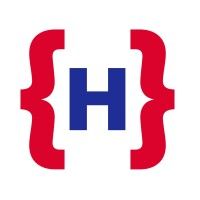Unpacking Docker: Revolutionizing Development with Containers in the MERN Stack

Docker is a powerful platform designed to make it easier to create, deploy, and run applications by using containers. Containers allow developers to package up an application with all of the parts it needs, such as libraries and other dependencies, and ship it all out as one package. This ensures that the application will run on any other Linux machine regardless of any customized settings that machine might have that could differ from the machine used for writing and testing the code.
How Docker is Useful
Docker's main benefit lies in its ability to package applications in containers, which makes for efficient, lightweight, and secure deployment. Here are several key advantages:
- Consistency Across Environments: Docker ensures that your application works seamlessly in any environment. This consistency reduces the "it works on my machine" problem when moving software between development, testing, and production environments.
- Rapid Deployment: Docker containers can be created, started, stopped, and destroyed in seconds, allowing for quick iterations and development cycles.
- Isolation: Docker containers are isolated from each other and the host system. This isolation improves security and allows for individual components to be updated without affecting others.
- Resource Efficiency: Containers share the host system’s kernel but can be constrained to use a certain amount of resources like CPU and memory, making them more efficient than running the equivalent setup on virtual machines.
- Microservices Architecture: Docker is ideal for a microservices architecture since services can be packaged into individual containers, allowing for modular application development and deployment.
How to Use Docker
Using Docker involves several key steps:
- Install Docker: First, you need to install Docker on your development machine. Docker provides a straightforward installation package for Windows, Mac, and Linux.
- Create a Dockerfile: This is a text file that contains all the commands a user could call on the command line to assemble an image. It specifies the base image to use, software to install, and files to add or copy to the image.
- Build an Image: With the Dockerfile created, you use the
docker buildcommand to create an image. This image contains all of the application code and dependencies. - Run a Container: Once you have an image, you can run it in a container using the
docker runcommand. This starts your application in an isolated environment.
Example: Using Docker in a MERN Project
In a MERN (MongoDB, Express.js, React, Node.js) project, Docker can simplify the setup and deployment process. Here’s a basic example of how Docker might be used:
- Dockerfile for Node.js Backend:DockerfileCopy code# Specify the base image
FROM node:14
# Set the working directory in the container
WORKDIR /usr/src/app
# Copy package.json and install dependencies
COPY package*.json ./
RUN npm install
# Bundle app source
COPY . .
# Expose the port the app runs on
EXPOSE 8080
# Command to run the app
CMD [ "node", "server.js" ] - Dockerfile for React Frontend:
Similar to the backend, but you would build your React app and serve it, possibly with Nginx. - Docker Compose: To simplify the running of both the front-end and back-end services together, you can use Docker Compose. This tool allows you to define and run multi-container Docker applications. You would create a
docker-compose.ymlfile that specifies both the backend and frontend services, along with any databases or other dependencies. - Run Your MERN Stack: With Docker Compose, you can start your entire stack with a single command:
docker-compose up.
In conclusion, Docker represents a transformative approach to software development, offering a robust solution for the age-old problem of ensuring that software runs reliably when moved from one computing environment to another. Its use of container technology ensures that developers can package applications with all their dependencies into a single container that is portable and consistent across any platform. Docker simplifies the deployment of applications, enhances security, and facilitates a microservices architecture, making it an essential tool for modern software development, including complex, full-stack projects like those using the MERN stack. Whether you're developing a small application or working on a large, distributed system, Docker's efficiency, and flexibility can significantly streamline your development and deployment processes, making it a valuable asset in your development toolkit.

